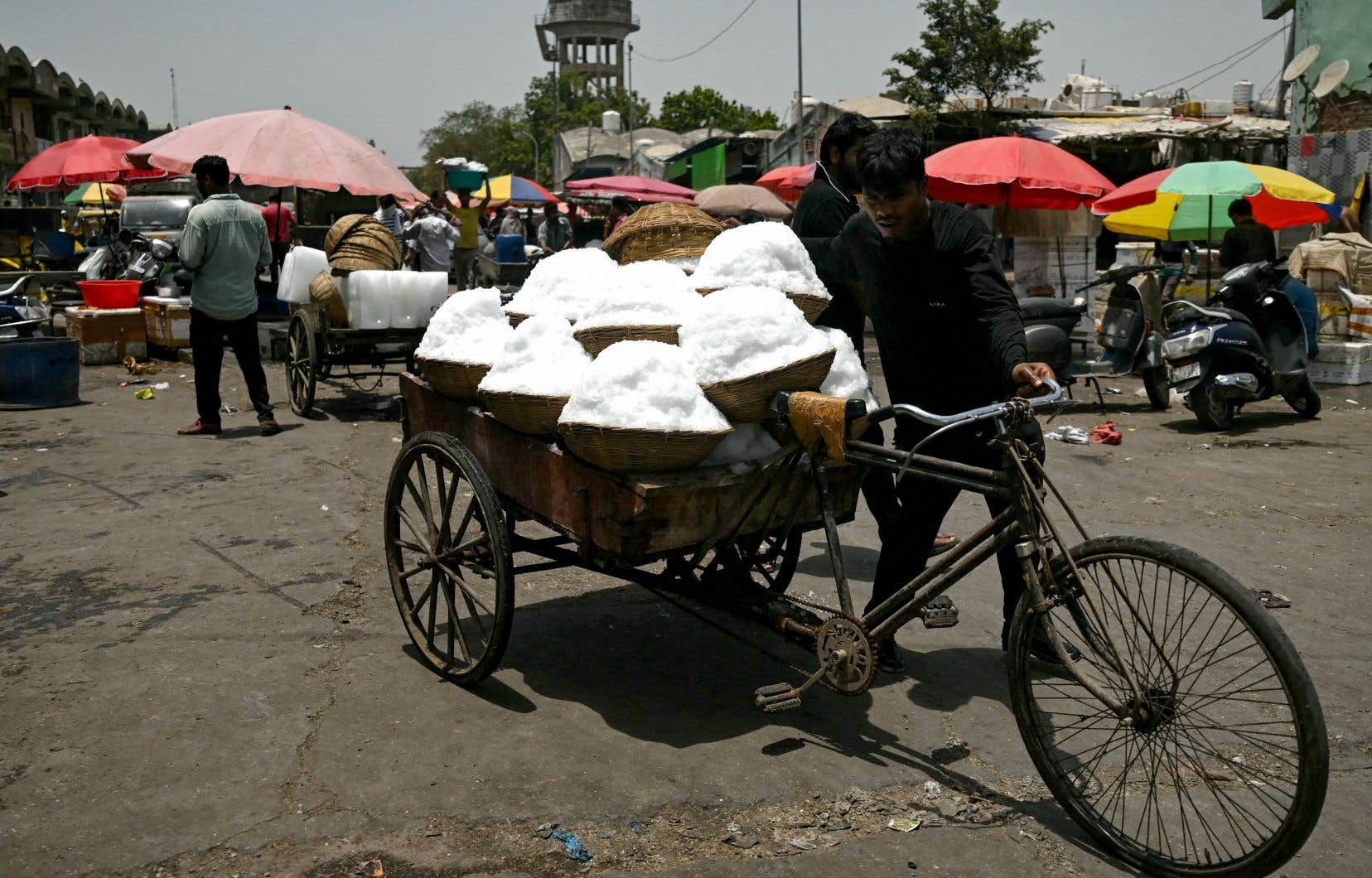A temperature of 52.3°C, a national record, was recorded on Wednesday in New Delhi, the capital of India, where authorities are warning of water shortages.
The record temperature was recorded Wednesday afternoon in the New Delhi suburb of Mungeshpur by the country’s meteorological department, beating the previous national record recorded in the Rajasthan desert by more than one degree Celsius. .
Indian weather had already reported previous records for New Delhi, on Tuesday at 49.9°C, then at 50.5°C on Wednesday.
Authorities in the city of some 30 million inhabitants issued a red health alert for Wednesday.
They warned of a “very high probability of developing heat-related illnesses and heat stroke at all ages” and called for “extreme vigilance” towards vulnerable people.
The heatwave in central and northwest India is “expected to gradually ease” from Thursday, according to India Weather.
In May 2022, 49.2°C was recorded in certain districts of the capital.
Scorching temperatures are common in India during summer, but researchers say climate change is leading to longer, more frequent and more intense heat waves.
On Wednesday, on the streets of Delhi, residents appeared fatalistic, not being able to do much to avoid the heat.
” Stay inside “
“Everyone wants to stay indoors,” said Roop Ram, 57, a snack vendor, saying he was having trouble selling his savory donuts.
Mr. Ram, who lives with his wife and two sons in a cramped house, regrets that his small fan does not cool the atmosphere and prefers to count on the arrival of the rainy season in July.
“I don’t know what else we can do,” says Rani, 60, who travels two hours by bus every morning to sell jewelry to tourists on a basic stand. “It’s definitely warmer, but there’s nothing we can do about it,” she said, drinking water from a bottle she brought from home.
New Delhi authorities have warned of a risk of water shortages. Supply cuts have already occurred in some places.
The Minister of Water, Atishi Marlena, called for the “collective responsibility” of residents to avoid waste, the newspaper reported on Wednesday Times of India.
“To solve the problem of water shortage, we have taken a series of measures such as reducing water supply from twice a day to once a day in many areas,” Ms. Atishi said, according to’Indian Express.
“Rationed water”
“The water thus saved will be rationed and distributed to the areas [confrontées] to a shortage of water and where the supply lasts only 15 to 20 minutes per day,” she added.
The Indian capital depends almost entirely on the neighboring agricultural states of Haryana and Uttar Pradesh, whose water needs are enormous.
The Indian Weather Service also warned of the health consequences of the heat, particularly among infants, the elderly and those with chronic illnesses.
It was in the state of Rajasthan that the highest temperatures were recorded on Tuesday, due to scorching winds, at 50.5°C.
The desert region around the town of Phalodi, in the same state in northwest India, experienced a historic record of 51°C in 2016.
Neighboring Pakistan also suffered severe heat waves, with a peak temperature estimated at 53°C on Sunday in Sindh, a province bordering India.
Pakistan’s weather bureau said it expected temperatures to drop starting Wednesday, but warned of more heatwaves in June.
Meanwhile, the northeastern states of West Bengal and Mizoram were hit by strong winds and torrential rains accompanying powerful cyclone Remal, which ravaged India and Bangladesh on Sunday , causing more than 65 deaths.
Bangladesh’s meteorological department said the cyclone was one of the longest the country has ever experienced and blamed climate change for the exceptional duration.
